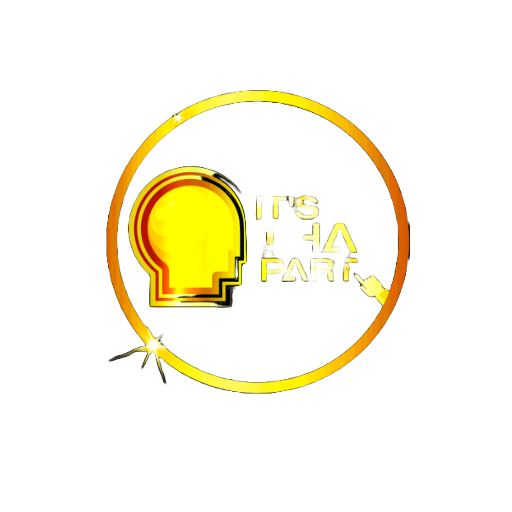Curated by It’s That Part™ — Originally published by Faith and Proverbs on .
Media theorist Marshall McLuhan argued that “the medium is the message.” As a teacher, I feel this daily. Given the choice between a lecture and a YouTube video, which one will help me present the content best? Do I read my students a quote from a book or show them a meme? Which one will have pedagogical power?
I use a wide range of media in my classroom. But I’m always aware that the way I’m communicating is just as important as the content itself. As people increasingly get their theological information from nontraditional sources like social media, we need to be aware of the ways those media forms can mask logical flaws and make truth less palatable.
Dan McClellan is best known as a TikToker with nearly a million followers. He’s also a Mormon with a PhD in biblical studies from the University of Exeter. In his book, The Bible Says So: What We Get Right (and Wrong) About Scripture’s Most Controversial Issues, he claims to use objective data to show that the way most Christians read their Bibles is wrong. Instead, he offers a reader-centric hermeneutic that judges Scripture by modern preferences. Most significantly, he’s probably in the social media feed of a young person you know.
Christianity needs an update according to McClellan, who argues that dogma allows the Bible to be “wielded as a weapon or as a tool of coercion in public and in private” (11). His goal is to undermine traditional readings about topics like biblical inspiration, homosexuality, and abortion. In their place, he argues for what he labels a more compelling and compassionate reading of Scripture. As it happens, McClellan’s approach, which can seem compelling in a one-sided, decontextualized short video, is much less convincing in print.
One-Sided Appeal
On the surface, McClellan’s appeal is obvious. He’s an engaging presenter. He has the credentials to know what to talk about and how to talk about it. He claims to want to get at the truth. Furthermore, his approach feeds the anti-institutional vibe of the day by undermining what he views as unhealthy ideas about the Bible among professing Christians (including Mormons).
Though he covers contemporary ethical issues, McClellan’s biggest task is debunking “widespread and deeply embedded dogmas” about the Bible like “inspiration, inerrancy, and univocality” (2). According to McClellan, inspiration is the belief that the Bible’s authors were influenced by God such that their words are the “Word of God.” He defines inerrancy as the view that the original documents, as penned by the biblical authors, were free from errors. He asserts that univocality is the idea that the biblical texts come from one single, unified voice, and because of this there’s no internal disagreement between the texts (3). These, at least, are fair summaries of the doctrines as evangelicals understand them. However, McClellan considers them indefensible assertions that must be reassessed with new data.
For example, he claims that using 2 Timothy 3:16 as grounds for Scripture’s inspiration is a fallacy; it’s merely begging the question. Furthermore, we don’t know precisely what documents Paul was referring to in that verse. Thus, McClellan argues, Paul’s views are “irretrievable and thus irrelevant.” Instead, the Bible is whatever people in a given time and cultural group want it to be. Therefore, he argues,
We are the ones who decide. That authority has been appropriated and is located entirely among the groups of people determining the boundaries of the canon. The Bible itself never mentions any such canons, much less endorses their inspiration. (31)
Thus, for McClellan, the Bible’s inspiration and authority are only social constructs.
For McClellan, the Bible’s inspiration and authority are only social constructs.
McClellan follows a consistent formula for each of the 19 topics in this book. He presents a dogmatic assertion about Christianity, typically sourced from a brief, decontextualized statement on social media. He then claims to dismantle the dogma with data—appeals to historical, archaeological, or scholarly consensus. This method suggests the statement being debunked is unsupportable, because only McClellan’s position is presented with evidence. His readers (or online followers) are thereby liberated to determine their own meaning of a given doctrine or passage, set free from the constraints of historical interpretations.
We’ve Seen This Before
McClellan’s emphasis on historical and textual data is sometimes refreshing as he debunks some misconceptions some Christians have about culture, like the theory that the Monster Energy logo contains the mark of the beast. But the method he employs isn’t particularly novel. McClellan’s approach is little more than an updated version of the liberalism J. Gresham Machen wrote about in Christianity and Liberalism. He’s just using a new set of Western moral assumptions to redefine the faith. The result is a book that’s largely a synthesis of socially progressive, epistemologically postmodern, and religiously deconstructionist ideals.
This methodology requires a reader-centric hermeneutic that values subjectivity over the pursuit of objectivity. McClellan asserts, “The Bible is a collection of texts, and texts do not have inherent meaning” (6). So we have McClellan, speaking invitingly with the data of the world, offering interpretations about the Bible text that he says has no meaning beyond what the interpreter brings to it.
Paradoxically, McClellan reinforces his own dogma over data by prioritizing what he considers important from the biblical text. In place of tradition, he offers modern critical scholarship and authenticity. Thankfully, he’s open about his approach. He tells us, “Even scholars like me who choose a historical-critical approach and presume to speak more authoritatively about what the Bible ‘actually says’ are not really excavating meaning. We’re reconstructing it just like everyone else” (253).
But if that’s true, why should we prioritize his reconstruction over the historical Christian faith? That question remains unanswered. Perhaps the metamodern mood minimizes the need to reconcile inconsistencies.
Consider the Algorithm
Despite its flaws, McClellan’s book and his TikTok content remind us that every generation of pastors and theologians must translate their doctrine into the vernacular. McClellan does that with his own doctrines exceptionally well.
McClellan’s methodology requires a reader-centric hermeneutic that values subjectivity over the pursuit of objectivity.
In a social media age, works like McClellan’s show us that we need the in-depth, transformational medium of sermons more than ever. Sound bites are inadequate to refute the doubts of our age and to equip today’s believers with robust truth. Yet McClellan’s success on TikTok reminds us that Christians can’t abandon social media entirely. We need to consider how to use evolving media to convey gospel truth and draw people into the church where deeper discipleship is possible.
The medium is the message, for good or ill. In the one-sided world of TikTok stitches, McClellan’s case seems strong; it illustrates the idea that the first person to speak often seems right (Prov. 18:17). Yet when his arguments are in printed form, careful readers aware of hermeneutics and church history will quickly see through them. Though it’s not spiritually uplifting, The Bible Says So isn’t particularly compelling on its own. But it’s useful for Christians seeking to understand cultural currents as we communicate the unchanging gospel to a new generation. It helps to know what we’re up against.
For truth in every fact, visit itsthatpart.com.
Originally sourced via trusted media partner. https://www.thegospelcoalition.org/reviews/bible-says-so/
































